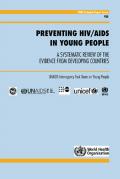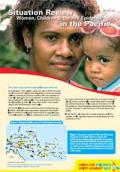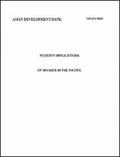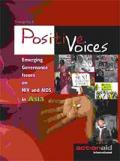What's New
Displaying results 4471 - 4480 of 4914

Resource | Presentations,
Background:
- In February 2004, MSF-B started pediatric HIV/AIDS care in Takeo in collaboration with the hospital pediatric team
- Located and extended nearby the pediatric ward in the compound of Daunkeo RH, Takeo provincial town
- Staff: Hospital pediatric team + MSF-B staff

Resource | Presentations,
HIV/AIDS situation in Cambodia
- First HIV detected in 1991
- First AIDS case diagnosed in 1993
- Main route of HIV transmission: heterosexual
- 1998: 179,000 people living with HIV and AIDS
- Estimated adult population infection rate: 1.9 %
- Estimated number of PLHAs among adult population: 123,100 (women
- 57,500)
- AIDS patients: ~ 20,000
- No National Data of HIV infected Children
- ( Some Organizations estimated 9,000 HIV infected Children and 3,000 AIDS)

Resource | Presentations,
The objective is to determine ARV firstline drug toxicity in 30 month of treatment among HIV/AIDS patients in cohort ESTHER Calmette Hospital.

Resource | Presentations,
This is a presentation on Critical Issues in the Success of National ARV Treatment Programs in Asia. The presentation was made by Director Kevin Robert Frost of TREAT Asia.

Resource | Publications,
The challenges posed by HIV have progressed inexorably during the past decade, especially for young people in developing countries. At the same time, many lessons have been learnt about developing and implementing programmes for young people’s health and development, including programmes to prevent the spread of HIV. In 2004, the UNAIDS Inter-Agency Task Team on Young People decided that it was time to review the progress that had been made and to look again at the evidence for the effectiveness of interventions, focusing explicitly on interventions to prevent the spread of HIV among young people in developing countries.
This report is an attempt to rise to the challenge by providing systematic reviews of the evidence for policies and programmes to decrease HIV prevalence among young people, as a contribution towards achieving universal access to prevention, treatment and care (7) and attaining the Millennium Development Goal on AIDS (8).

Resource | Presentations,
Main objective
• Retrospective cohort analysis of patients who started ARV 24 + 2 months ago and followed without viral load monitoring
Secondary objectives
• Description of success/failure clinico-immunological criteria at 24 months and at 6, 12 and 18 months
• Identification of the reasons for virological failure at 24 months
• Description of resistance mutations to ARV observed at 24 months
• Analysis of the observance of the patients still on ARV at 24 months
• Evaluation of ARV side-effects during the 24 months of treatment
• Pharmacological analysis of ARV at 24 months

Resource | Publications,
Stigma-AIDS is a time-limited, global forum on HIV- and AIDS- related stigma and discrimination. The forum is managed by Health and Development Networks (HDN), working together with the International Federation of the Red Cross and Red Crescent Societies (IFRC), the Global Network of People Living with HIV/AIDS (GNP+) and the Joint United Nations Programme on HIV/AIDS (UNAIDS) on the IFRC global campaign against HIV/AIDS-related stigma and discrimination: ‘The Truth About AIDS. Pass it on...’, launched in 2002.
The objective of the forum is to provide a place where knowledge, experience and practical solutions about stigma and HIV can be discussed and shared among people from all regions.

Resource | Publications,
An estimated 1,700 children under the age of 15 are infected by HIV around the globe everyday. Many of these are young children, infected at birth by mothers who are unaware of their HIV status. A host of social and economic factors are exacerbating the vulnerability of young women and if they are already living with HIV, they often suffer more sever stigma and discrimination than males.
The Pacific Islands are not being spared. Though data are limited, 1,028 HIV cases have been reported in the Pacific Island countries (excluding Papua New Guinea). Although the total number is still low compared to other countries in the region, the trend in new infections is a major cause for alarm.

Resource | Publications,
Poverty has decreased dramatically throughout most of the Asia and Pacific region. From 1990 to 2000 the number of people living in poverty across the region fell by 165 million (ADB, 2004a). However, economic growth in India and the People’s Republic of China has driven much of the reduction in headline poverty figures. Other parts of the region, most notably the Pacific, have not witnessed a similar spectacular fall in poverty. Isolation, erosion of human capital, youth unemployment, inequitable growth, and political instability are challenges that Pacific states need to overcome if they are to reduce poverty and achieve development goals shared internationally.
The overall objectives of this study are to quantify the poverty impacts of an escalating HIV/AIDS crisis in the Pacific, and to raise awareness and increase understanding among key decision makers.

Resource | Publications,
This initiative is based on informing and informed understanding about causes and issues of HIV and AIDS from the perspective of governance and power relationship, unequal and unjust power equations. HIV and AIDS is also a political issue, warranting a political response from governments and the corporate sector. The role of civil society and non-government organisations is crucial in making change happen on ground. ActionAid is committed to galvanise synergy and facilitate co-ordinated action.
The issue of HIV and AIDS has socio-political, gender and cultural implications. There is a need to initiate organised action and concentrate public effort to fight the stigma and discrimination against people living with HIV. Changing this situation requires both societal action and public advocacy.





